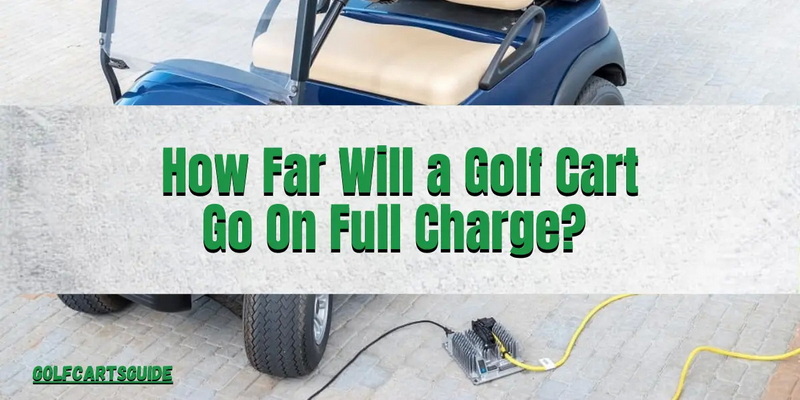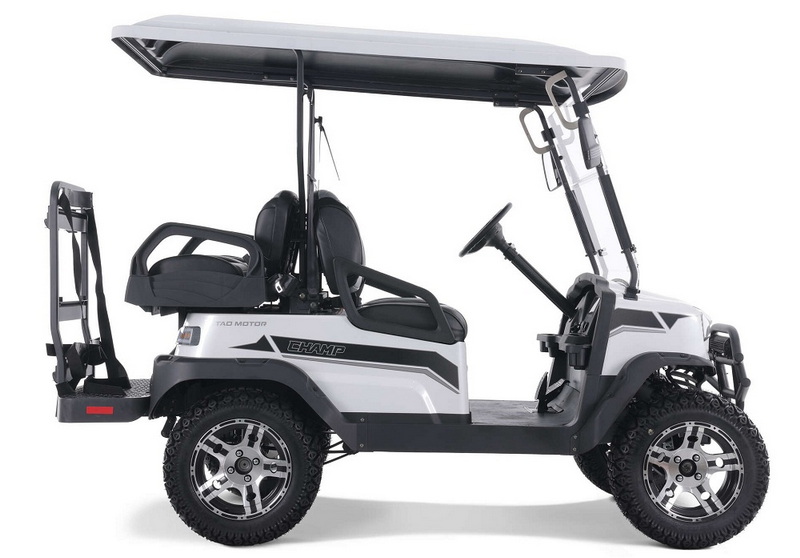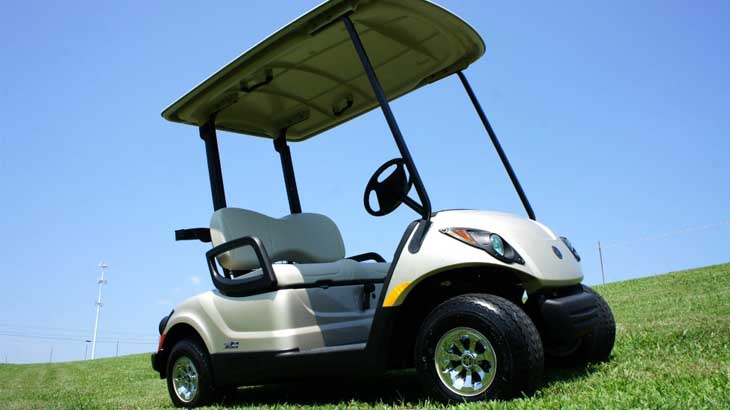Content Menu
● Understanding Electric Golf Cart Range
>> Battery Types and Their Impact on Range
>> Factors Affecting Range
● Maximizing Your Electric Golf Cart's Range
>> Regular Maintenance
>> Optimize Driving Habits
>> Plan Your Route
>> Charge Regularly
● Real-World Examples of Electric Golf Cart Ranges
>> Popular Electric Golf Cart Models
● The Future of Electric Golf Carts
>> Environmental Impact
● Conclusion
● Frequently Asked Questions
>> 1. How far can I expect my electric golf cart to go on a full charge?
>> 2. What is the difference between lead-acid and lithium-ion batteries?
>> 3. Can I use my electric golf cart in the rain?
>> 4. How often should I charge my electric golf cart?
>> 5. What maintenance does an electric golf cart require?
Electric golf carts have become increasingly popular not only on golf courses but also in residential communities, parks, and other recreational areas. As more people consider switching from traditional gas-powered carts to electric models, one of the most common questions arises: How many miles will an electric golf cart go? This article will explore the factors that influence the range of electric golf carts, the technology behind them, and tips for maximizing their distance.

Understanding Electric Golf Cart Range
The range of an electric golf cart refers to the distance it can travel on a single charge. This distance can vary significantly based on several factors, including the type of battery, the weight of the cart, terrain, and driving habits.
Battery Types and Their Impact on Range
Electric golf carts typically use one of two types of batteries: lead-acid or lithium-ion.
- Lead-Acid Batteries: These are the traditional battery type used in many electric golf carts. They are generally less expensive but heavier and have a shorter lifespan. A typical lead-acid battery can provide a range of about 20 to 40 miles on a full charge, depending on the conditions.
- Lithium-Ion Batteries: These batteries are becoming more popular due to their lighter weight, longer lifespan, and better performance. A lithium-ion battery can offer a range of 40 to 100 miles on a single charge, making it a more efficient choice for those who need to travel longer distances.
Factors Affecting Range
1. Weight of the Cart: Heavier carts require more energy to move, which can reduce the overall range. Carts designed for multiple passengers or those equipped with additional features may weigh more.
2. Terrain: The type of terrain significantly impacts how far an electric golf cart can go. Flat, paved surfaces allow for greater distances, while hilly or rough terrains can drain the battery more quickly.
3. Driving Habits: Aggressive driving, such as rapid acceleration and frequent stops, can reduce the range of an electric golf cart. Smooth, steady driving can help maximize distance.
4. Weather Conditions: Extreme temperatures can affect battery performance. Cold weather can reduce battery efficiency, while hot weather can lead to overheating.
5. Tire Pressure: Properly inflated tires reduce rolling resistance, allowing the cart to travel further on a single charge.
Maximizing Your Electric Golf Cart's Range
To get the most out of your electric golf cart, consider the following tips:
Regular Maintenance
Keeping your golf cart in good condition is essential for optimal performance. Regularly check the battery, tires, and brakes to ensure everything is functioning correctly. Clean the battery terminals and ensure that the battery is charged properly.
Optimize Driving Habits
Adopt smooth driving habits to conserve battery life. Avoid rapid acceleration and try to maintain a steady speed. Use regenerative braking if your cart is equipped with this feature, as it can help recharge the battery while slowing down.
Plan Your Route
If you know you'll be traveling a long distance, plan your route to include flat, paved areas whenever possible. Avoid steep hills and rough terrain that can drain the battery more quickly.
Charge Regularly
Make it a habit to charge your golf cart after each use, even if you haven't fully depleted the battery. This practice can help extend the overall lifespan of the battery and ensure you have enough power for your next outing.

Real-World Examples of Electric Golf Cart Ranges
Many manufacturers provide specifications for their electric golf carts, detailing the expected range based on ideal conditions. For instance, some high-end models equipped with lithium-ion batteries can achieve ranges of up to 100 miles, making them suitable for longer trips or extended use in larger communities.
Popular Electric Golf Cart Models
1. Club Car Onward: This model offers a range of approximately 40 miles with lead-acid batteries and up to 75 miles with lithium-ion options.
2. Yamaha Drive2: Known for its durability, the Drive2 can travel around 30 to 50 miles on a single charge, depending on the battery type.
3. EZGO Freedom RXV: This model boasts a range of 40 to 60 miles, making it a popular choice for both golf courses and residential areas.
The Future of Electric Golf Carts
As technology continues to advance, the future of electric golf carts looks promising. Manufacturers are investing in research and development to create more efficient batteries and improve the overall performance of electric carts. Innovations such as solar panels integrated into the carts and advanced regenerative braking systems are on the horizon, which could further enhance the range and sustainability of electric golf carts.
Environmental Impact
Switching to electric golf carts can also have a positive impact on the environment. Electric carts produce zero emissions, making them a cleaner alternative to gas-powered models. This shift not only benefits the environment but also contributes to quieter, more enjoyable experiences on the golf course and in residential areas.
Conclusion
In conclusion, the range of an electric golf cart can vary widely based on several factors, including battery type, weight, terrain, and driving habits. By understanding these elements and implementing best practices for maintenance and operation, you can maximize the distance your electric golf cart can travel on a single charge. Whether you're using it for a leisurely day on the golf course or as a convenient mode of transportation in your community, knowing how far your electric golf cart can go will help you plan your outings effectively.

Frequently Asked Questions
1. How far can I expect my electric golf cart to go on a full charge?
The distance an electric golf cart can travel on a full charge typically ranges from 20 to 100 miles, depending on the battery type and other factors such as weight and terrain.
2. What is the difference between lead-acid and lithium-ion batteries?
Lead-acid batteries are heavier and less expensive but have a shorter lifespan and range compared to lithium-ion batteries, which are lighter, more efficient, and can provide a longer range.
3. Can I use my electric golf cart in the rain?
While many electric golf carts are designed to be weather-resistant, it is advisable to avoid heavy rain and flooding to prevent damage to the electrical components.
4. How often should I charge my electric golf cart?
It is recommended to charge your electric golf cart after each use, even if the battery is not fully depleted, to maintain battery health and longevity.
5. What maintenance does an electric golf cart require?
Regular maintenance includes checking the battery, tires, and brakes, cleaning battery terminals, and ensuring proper tire pressure to optimize performance and range.










































